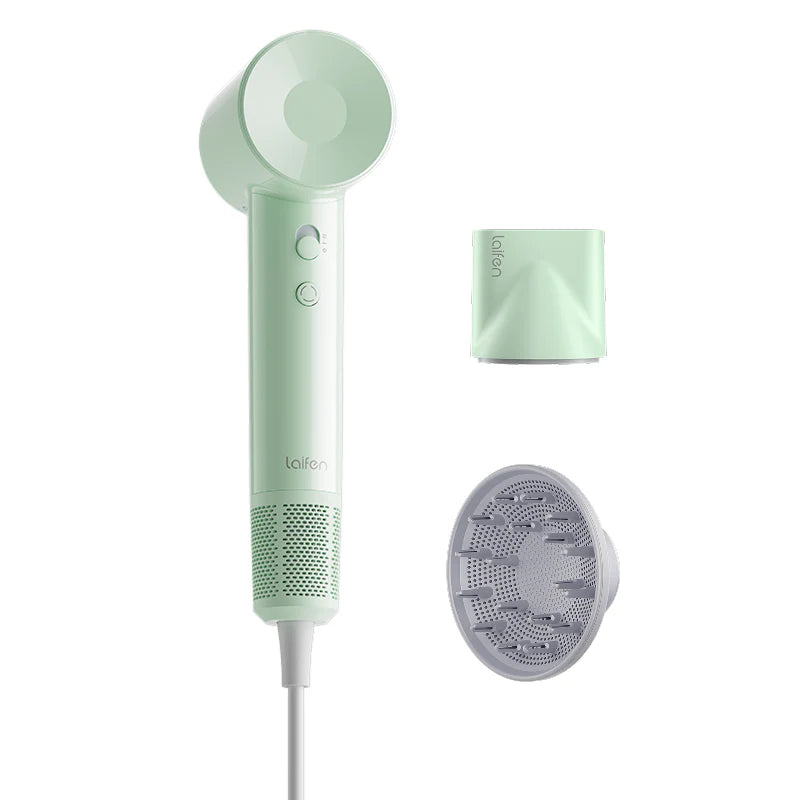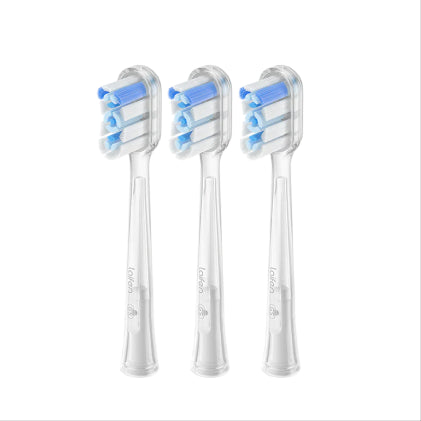
In this article
Heat and hair aren’t exactly a match made in heaven. Excessive heat exposure typically leads to damage, causing locks to be dry, frizzy, and dull. With this in mind, you may be wondering if hair dryers do more harm than good to your hair. After all, they’re tools that are essentially synonymous with heat.
In this guide, we’ll be answering the million dollar question once and for all: is a hair dryer bad for your hair? Read on to find out the answer!
Why Is Heat Bad For Hair? Understanding The Causes Of Hair Damage
Before we get to the verdict, it’s important to understand the science behind heat damage.
First, you’ll need to know about the anatomy of a hair strand. Hair is made up of layers that are held together by proteins:
- The external layer is called the cuticle, which is made up of overlapping proteins that protect the inner layers from the elements.
- The internal layer is called the cortex, which is made up of interwoven keratin protein chains that provide the strand with strength, elasticity, and shape.
Hair cuticles are naturally heat resistant to a certain point – about 250℃ – but after that, the effect of heat will begin to take its toll. Overexposure can break up the chemical bonds that hold hair together. It causes the cuticle cells to lift and separate, leaving the cortex more vulnerable to damage. The keratin proteins will begin to shrink and melt, causing hair to lose its strength and elasticity. You’ll begin to see damage in the form of …

- Frizz. The uneven texture of the hair cuticle allows moisture to enter and swell the hair shaft, creating an unaligned, frizzy appearance.
- Dryness. An open hair cuticle allows moisture to escape from the strand.
- Dullness. Broken hair cuticles don’t reflect light as much as a smooth, sealed, healthy cuticle.
- Split ends. Weakened strands are more prone to breakage.
The more heat your hair is exposed to, the more prone to damage it will be.
Are Hair Dryers Bad For Your Hair?
You may assume hair dryers are bad for your hair because they offer a constant source of heat, but it’s not that simple. Overexposure to heat is indeed bad for hair, but keeping your strands wet for a long time isn’t the best solution.

Wet hair is significantly weaker than dry hair, making it more susceptible to breakage. Water temporarily breaks some of the hydrogen bonds in hair’s keratin structure, causing it to become more elastic and prone to overstretching. If wet hair is stretched and pulled excessively, the cuticle can become cracked and uneven. Moisture-filled hair is also prone to swelling due to stress and pressure on the cuticle, which can lead to breakage and split ends.
This means that using a hair dryer can actually be beneficial, since it speeds up the drying process and minimizes the time hair stays wet. Plus, there are special techniques you can use to prevent heat damage from a hair dryer!
How To Minimize Hair Dryer Damage
It’s not the hair dryer itself that can cause damage – it’s the hot air stream. There are several ways you can minimize heat damage while using a hair dryer:
- Step 1: Invest in a high quality hair dryer.
Look for a model with features that actively prevent heat damage, like cool temperature settings, powerful motors, and ionic technology so you can dry your hair as quickly as possible with minimal heat exposure. We recommend the Laifen SE for a sleek model that ticks all of the aforementioned boxes!

- Step 2: Use a heat protectant spray.
Give your strands an extra layer of protection with a specialized product.
- Step 3: Choose the right heat and speed settings.
Stick to cooler temperatures as much as possible. If you’re worried about cool air taking longer to dry than hot air, combine your cool temperature setting with a high speed setting to boost drying time. If you are using heat, switch to a lower speed setting and hold the hair dryer further away (about 20cm) from your scalp.
- Step 4: Keep the dryer moving when using heat.
Adopt a dynamic drying rhythm and avoid holding the dryer in one spot for too long. Alternatively, invest in a Laifen hair dryer with a temperature cycling mode that takes the pressure off of you!
- Step 5: Reduce your drying frequency.
Try to go longer between washes to avoid using your hair dryer too much.
- Step 6: Engage in healthy hair care.
Ensure your routine promotes hair health by choosing nourishing products and scheduling regular trims to remove any split ends.
Alternative Drying Methods
Of course, you don’t have to use a hair dryer every time. There are other drying methods you can use that minimize heat damage:
- Air drying. If you have fine, low-density hair that dries quickly, you may be able to get away with air drying without any moisture damage. There isn’t a specific amount of time you can safely leave your hair wet without causing cuticle stress and swelling, but it’s recommended to not exceed 2 hours of wetness.
- Towel drying. If you don’t want to use a hair dryer or feel dripping wet hair on your back, towel drying will be a good option for you. Stick to a specialized microfiber hair towel. Not only is the material better at absorbing moisture than regular terry towels, the soft texture is also gentler on hair, which means smoother locks.
- Hybrid drying. You don’t have to stick to just one drying method! There are plenty of hybrid methods that let you enjoy the best of both worlds. You can start with towel-drying and finish up with a hair dryer, or give your locks a warm-to-cool blast before letting them air dry (or vice versa). Whichever combinations you choose, just make sure they’re effectively reducing the amount of time your hair stays wet.
Conclusion – Is Using A Hair Dryer Bad For Your Hair?
Excessive heat exposure isn’t great for hair, but that doesn’t mean you should swear off your hair dryer. These tools can actually help you prevent damage when selected and used correctly. Be sure to choose a high quality model with features like cold air settings and ionic technology, balance any heat styling with proper care, and you’ll be on the right path towards gorgeous, healthy hair!



























